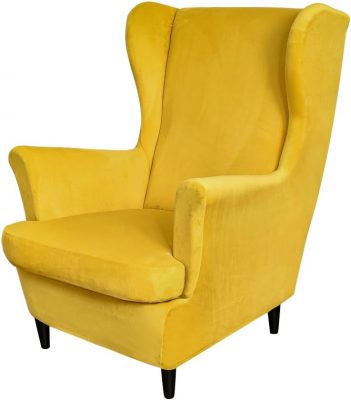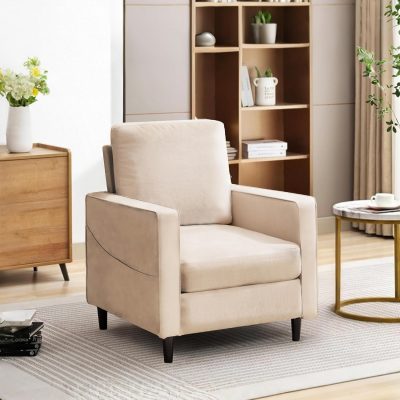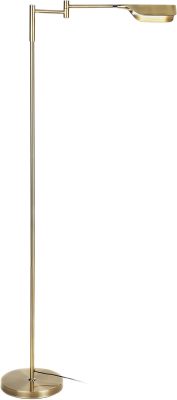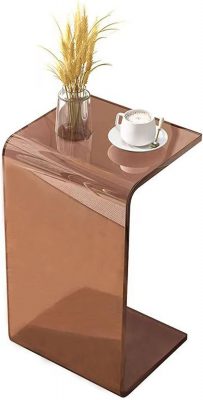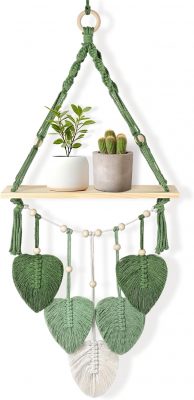How to Build a Comfortable & Productive Reading Nook at Home
In an age where our homes often double as offices, gyms, and entertainment centers, carving out a dedicated reading nook isn’t just a nice-to-have—it’s a necessity for mental clarity and personal well-being.
The Psychological Benefits
Having a specific place in your home just for reading signals to your brain that it’s time to slow down. This mental cue helps you shift out of a multitasking mindset and into a state of calm focus, which:
Reduces stress: Studies show that reading for just 6 minutes can reduce stress levels by up to 68%.
Improves focus: A quiet, defined space reduces distractions, making it easier to engage with longer texts.
Boosts cognitive function: Regular reading improves memory, vocabulary, and empathy.
Builds Consistency and Routine
When you have a designated space for reading, you’re more likely to turn it into a daily habit. Much like a gym motivates exercise, a cozy reading corner encourages regular reading time—whether it’s 10 minutes in the morning or an hour before bed.
Builds Consistency and Routine
When you have a designated space for reading, you’re more likely to turn it into a daily habit. Much like a gym motivates exercise, a cozy reading corner encourages regular reading time—whether it’s 10 minutes in the morning or an hour before bed.
Enhances Your Home’s Atmosphere
Reading nooks add warmth and character to any room. They invite relaxation and communicate a lifestyle that values learning and self-care. Even in minimalist homes, a well-designed nook becomes a focal point that enhances both functionality and design.
Supports Mental Health and Digital Detox
We spend hours each day glued to screens. A reading nook becomes a sanctuary from digital fatigue, offering a much-needed break for your eyes and brain. It’s a place where the only goal is to get lost in a good book.
A Space That’s Truly Yours
In a busy household, it’s easy to feel like every room serves multiple people or purposes. A reading nook is a chance to create something personal—a retreat that reflects your taste, your pace, and your passions.
Choosing the Right Spot in Your Home
Before you shop for chairs or string up fairy lights, the foundation of a perfect reading nook is location. The spot you choose will directly impact how often you use the space—and how enjoyable it feels to spend time there. The good news? You don’t need a huge home or a spare room to create something magical.
Key Factors to Consider
1. Natural Light
Natural light helps reduce eye strain, boosts mood, and makes reading more enjoyable.
South- or east-facing windows provide soft, consistent daylight—ideal for daytime readers.
No windows? No problem. Choose a spot where you can add layered lighting (more on that later).
2. Noise Level
Aim for areas with minimal foot traffic and away from household noise like TVs, kitchens, or laundry rooms.
If quiet is hard to come by, opt for spaces where you can close a door or add noise-softening elements like rugs and curtains.
3. Proximity to Power Outlets
If you’re using a reading lamp, charging an eReader, or playing soft background music, make sure the spot has nearby electrical access.
4. Space & Comfort
Measure your space to ensure you can fit your seating, lighting, and small accessories like a side table or bookshelf.
Even a compact 3’ x 3’ area can become a cozy reading nook with the right setup.
5. Privacy
If you crave solitude, pick a tucked-away corner, bedroom alcove, or even convert a closet into a mini reading sanctuary.
For parents or roommates, semi-private areas like behind a bookshelf divider or under the stairs can offer seclusion without isolation.
Ideal Locations for a Reading Nook
Here are some popular spots to scout in your home, along with pros and cons:
| Location | Pros | Cons |
|---|---|---|
| By a Window | Great natural light, scenic views, calming | May need curtains to soften harsh sunlight |
| Unused Closet | Private, quiet, perfect for small spaces | Needs proper lighting and ventilation |
| Bedroom Corner | Relaxing, easy to use before bed | May double as sleep zone—avoid too much clutter |
| Living Room Niche | Accessible, easy to integrate into family life | Can be noisy during peak hours |
| Sunroom/Enclosed Balcony | Serene, full of light, nature-adjacent | May get hot or cold depending on weather |
Lighting, Seating, and Decor Essentials
The heart of any great reading nook lies in three key components: lighting, seating, and decor. These elements not only determine how comfortable and inviting your space feels but also how often you’ll actually use it. Here’s a breakdown of what to prioritize and how to make informed choices when setting up your nook.
1. Comfortable Seating: Support Meets Style
Your chair is where you’ll spend the most time, so comfort is non-negotiable. Look for seating that offers both ergonomic support and softness, especially if you read for long stretches.
Key Features to Look For:
Lumbar Support: Helps reduce back strain, especially if you tend to hunch while reading.
Armrests: Great for holding up heavy books or for lounging with a blanket.
Cushion Depth: A deeper seat may be more comfortable for curling up; a firmer seat is better for posture.
Upholstery Material: Choose breathable, durable fabrics like cotton, velvet, or performance polyester for long-lasting comfort.
Popular Seating Types:
Armchairs: Versatile and easy to place in any room.
Chaise Lounges: Ideal for stretching out—great in bedrooms or larger spaces.
Rocking Chairs: Add a soothing, nostalgic feel.
Recliners: Adjustable and luxurious, especially for evening readers.
Floor Seating: Bean bags, poufs, or Japanese-style floor chairs work well for low-space nooks or boho aesthetics.
Add a memory foam seat cushion or lumbar pillow to upgrade any existing chair.
2. Lighting: Avoid Eye Strain & Set the Mood
Proper lighting is crucial for reading comfortably and protecting your vision. Poor lighting can lead to eye fatigue, headaches, and even discourage you from using the space altogether.
Types of Lighting to Include:
Ambient Lighting: The general light in the room—can come from overhead fixtures or wide-beam floor lamps.
Task Lighting: Directed, focused light specifically for reading—such as desk lamps, clip-ons, or adjustable sconces.
Accent Lighting: Creates mood and warmth, such as fairy lights, candles, or small table lamps.
Ideal Lighting Features:
Adjustable Brightness: Look for lamps with dimmers or multiple brightness settings.
Warm Light Bulbs (2700K–3000K): More relaxing and easier on the eyes than harsh blue or cool light.
Directional Shades or Gooseneck Arms: Helps direct light exactly where you need it.
Smart Lighting Options:
Philips Hue or Govee Smart Lamps: Customize color temperature and brightness with your phone or voice assistant.
Motion Sensor Lamps: Energy-efficient and convenient for closets or under-stairs spaces.
Lighting Layer Rule: Combine at least two types of lighting for both functionality and ambiance.
3. Decor: Style That Serves a Purpose
Decor isn’t just for aesthetics—it plays a vital role in how your reading nook feels and functions. Think of it as the final polish that makes your space yours.
Must-Have Decor Elements:
a. Side Table or C-Table
- Use it to hold your current read, tea, glasses, or a reading journal.
- Opt for one with a drawer or shelf if you need hidden storage.
b. Soft Furnishings
- Throw Blankets: Add texture and warmth. Great for seasonal switches.
- Decorative Pillows: Provide back or side support; mix sizes for layered comfort.
- Rugs: Define your reading space, especially in open-plan rooms, and absorb sound.
c. Wall Decor
- Framed Book Quotes or artwork that inspires calm or creativity.
- Floating Shelves: Practical storage that also lets you showcase favorite books or objects.
d. Plants or Greenery
- Low-maintenance options like snake plants, pothos, or succulents purify air and add life.
- Place them on the floor, hanging baskets, or shelf corners.
e. Scent and Sound
- Scented candles, essential oil diffusers, or incense can create a relaxing ritual.
- Consider a Bluetooth speaker or white noise machine for gentle background sound or audiobooks.
Bringing It All Together
Creating a comfortable and productive reading nook isn’t just about buying pretty furniture—it’s about crafting an intentional atmosphere that supports your reading goals. Each element should:
Enhance your comfort
Reduce distractions
Reflect your personal style
Think of your reading nook as a small sanctuary within your home—where every detail, from your lamp to your blanket, works together to encourage peace, presence, and pleasure in reading.
Best Products for Creating a Cozy Reading Nook
A well-crafted reading nook doesn’t require dozens of items—just the right ones. The following curated selections highlight exceptional products that elevate both comfort and function. Whether you’re working with a large room or a compact corner, these pieces can help you build a space you’ll love spending time in.
🪑 Chairs That Invite You to Stay Awhile
IKEA STRANDMON Wing Chair
A favorite for years, this classic wingback chair offers a comforting blend of traditional design and everyday practicality. Its high backrest supports your neck and upper spine, while the winged sides help cocoon you—ideal for long reading sessions or a quiet evening with tea. The firm seat promotes good posture without compromising on comfort, making it a great choice if you tend to read upright or switch positions frequently.
Ideal for: Window-side setups, bedrooms, or living room corners with a cozy, timeless aesthetic
Why it works: The upright design keeps your body alert and engaged, while still offering a relaxing retreat.
Article Gabriola Bouclé Chair
For those seeking modern flair without sacrificing comfort, the Gabriola chair delivers. Its curved, barrel-like silhouette provides a gentle wraparound feel that naturally supports a relaxed reading position. The bouclé upholstery adds texture and softness, perfect for tactile coziness. Though minimalist in appearance, the chair is surprisingly plush, making it an excellent option for both small apartments and design-focused spaces.
Ideal for: Compact reading nooks, modern or Scandinavian-style interiors
Why it works: Combines soft, sink-in comfort with a clean, aesthetic form that doesn’t overwhelm smaller rooms.
💡 Lighting to Set the Mood and Save Your Eyes
Philips Hue Gradient Floor Lamp
This smart lighting solution blends tech innovation with style. The lamp offers customizable light temperatures and colors—warm whites for evening wind-downs or cooler tones for focused reading during the day. Through an app or voice assistant, you can create automated lighting scenes, dim or brighten the space, and even match the lighting to your circadian rhythm.
Ideal for: Readers who use their space at different times of day or share it with others
Why it works: Lighting adapts to your needs, enhancing focus when needed or softening the atmosphere for relaxation.
Brightech Leaf Touch Floor Lamp
Compact and highly functional, this touch-operated floor lamp provides strong, directed task lighting. Its slender, minimal design fits into tight corners without adding visual clutter, and its adjustable head makes it easy to angle light precisely on your book or eReader. With its sleek silhouette, it’s especially useful in multipurpose or small-space layouts.
Ideal for: Urban apartments, bedside nooks, or shared living spaces
Why it works: Direct, eye-friendly illumination without overwhelming your nook—plus, easy touch controls enhance accessibility.
🧺 Accessories That Add Function and Flair
CB2 Peekaboo Acrylic C Table
This transparent side table is a masterclass in subtle functionality. Designed to slide easily over most chair or sofa arms, it provides a convenient surface for books, glasses, tea, or a reading light—all without visually crowding your space. Its clear acrylic construction keeps the area feeling open and modern, perfect for maintaining an airy atmosphere in small or light-filled rooms.
Ideal for: Minimalist setups, small spaces, or anywhere you want to reduce visual bulk
Why it works: Serves a practical purpose while visually “disappearing” into the room.
Urban Outfitters Macrame Wall Shelf
This wall-mounted shelf blends bohemian charm with practical storage. The macrame frame adds soft texture and character, while the compact wood shelf is just large enough to hold a few small books, a candle, or a potted plant. It’s a smart choice for anyone looking to personalize their space without using up floor space.
Ideal for: Renters, small rooms, or readers who love earthy, laid-back decor
Why it works: Adds personality, texture, and lightweight storage all in one easy-to-hang piece.
Tips to Make It a Distraction-Free Zone
Even the coziest reading nook can become underused if it’s constantly disrupted by noise, clutter, or tech temptations. To fully enjoy your reading time—and actually get through your reading list—it’s essential to create an environment that minimizes interruptions and maximizes concentration.
1. Establish a Reading Ritual
Creating a mental and physical routine helps your brain associate your nook with quiet, focused time.
Set a consistent daily or weekly reading schedule (e.g., 8:00–8:30 PM before bed).
Begin each session with a simple ritual—light a candle, brew tea, turn on a specific playlist—to signal your brain that it’s time to unwind and concentrate.
Avoid multitasking (no snacks, no notifications, no background TV) during reading hours to reinforce focused behavior.
Why it works: Repetition builds habit and signals your brain to shift into a calmer, more attentive state.
2. Declutter the Space Regularly
Visual clutter can be just as distracting as noise or movement. A clean, intentional space encourages your mind to settle.
Keep only essentials in your nook: a chair, light, current reads, and maybe a plant or candle.
Use closed storage (baskets, ottomans, drawers) to hide distractions like remotes, cables, or tech devices.
Remove unrelated items—work materials, unread mail, laundry, etc.—to keep the mental space aligned with reading.
Tidy your nook as part of your wind-down routine; a clean space invites you back the next day.
3. Minimize Digital Distractions
Smartphones, tablets, and notifications are the enemy of deep reading. Even a short glance at a screen can pull you out of the story and reduce comprehension.
Leave devices outside your nook, or use “Do Not Disturb” or “Focus” modes.
If you read on a tablet or eReader, turn off notifications and apps that aren’t related to reading.
Consider using a distraction-free eReader like a Kindle, which mimics paper and limits external content.
Set a physical reading timer to maintain focus without checking your phone.
Why it works: The less tempted you are to “just check one thing,” the longer you’ll stay immersed in your book.
4. Use Sound Strategically
Sound can either soothe or distract, depending on how it’s managed.
Sound-Reducing Tactics:
Add soft textiles like rugs, curtains, and cushions to absorb ambient noise.
Use noise-cancelling headphones if you’re in a shared or noisy space.
Focus-Friendly Sounds:
Play lo-fi or instrumental music to create a relaxed, rhythmic background.
Try nature soundscapes (rain, waves, forest ambience) to enhance tranquility.
Use a white noise machine or smart speaker to drown out interruptions without being distracting.
Why it works: Background sound, when carefully chosen, can help block environmental noise and increase reading stamina.
5. Create Physical Boundaries
Especially in shared homes or open-plan spaces, creating a sense of separation makes it easier to mentally “enter” your reading zone.
Use room dividers, bookshelves, or tall plants to create a visual barrier.
Define the nook with a rug or different lighting scheme (e.g., warm lamp in contrast to bright room lighting).
If possible, position your chair so it faces away from household activity or screens.
Why it works: Physical boundaries reduce visual distractions and help others recognize that the nook is a “do not disturb” zone.
6. Design for Comfort, But Not Sleep
While you want your reading nook to be cozy, it shouldn’t be too relaxing—otherwise, you’ll fall asleep mid-paragraph.
Choose seating with support, not just softness.
Ensure your lighting is bright enough for reading, but not harsh.
Sit upright enough to stay alert, with room to adjust posture if needed.
If you tend to nod off while reading, try changing your reading time to earlier in the day or incorporating brief movement breaks.
FAQ – Building Your Ideal Reading Nook
You don’t need a huge footprint to create a cozy corner. A reading nook can work in as little as 3′ x 3′ of floor space, especially if you use compact furniture like a slipper chair or floor cushion. It’s more about thoughtful layout and comfort than square footage.
The best lighting is a mix of ambient and task lighting. Look for warm white light (2700K–3000K) to reduce eye strain and create a relaxing mood. Adjustable lamps or smart lighting systems let you control brightness throughout the day.
Absolutely! In smaller spaces, consider:
Using a corner near a window
Adding a folding chair and clip-on lamp
Utilizing vertical space with floating shelves
Defining the nook with a rug or curtain for privacy
Small doesn’t mean limited—it means getting creative with design and function.
While natural light is ideal, it’s not essential. You can mimic daylight using LED lamps with adjustable brightness or full-spectrum bulbs. Pair this with a light-colored wall or decor to reflect more light and make the space feel open.
Use noise-cancelling headphones or a white noise machine
Set reading hours and communicate your quiet time
Add a room divider, curtain, or tall bookshelf to create visual boundaries
Keep your phone on Do Not Disturb or out of reach
A little planning and communication go a long way in shared spaces.
Yes! eReaders like Kindle Paperwhite or Kobo are great tools, especially if you’re short on shelf space. They offer paper-like displays, adjustable lighting, and reduce screen-related distractions—just remember to disable app notifications if using a multi-purpose tablet.
Use hidden storage like baskets, ottomans, or small drawers to store extras. Keep only your current reads and a few essentials in sight to maintain a clean, inviting vibe. A weekly 5-minute tidy-up is usually all it takes.
Definitely! Some people enjoy having a sunny spot for daytime reading and a cozier, lamp-lit area for evenings. Multiple nooks also work well if you switch between genres, formats (eBooks vs. paper), or moods.
Conclusion
In a world where we’re constantly connected, overstimulated, and short on time, carving out a quiet corner just for yourself is more than a luxury—it’s a form of self-care. A well-designed reading nook isn’t just about cozy furniture or stylish lighting. It’s a statement: This is where I slow down. This is where I focus. This is where I recharge.
From choosing the right spot in your home and layering in thoughtful lighting, to selecting supportive seating and surrounding yourself with calming decor, every element of your nook plays a role in creating a space that encourages presence, peace, and productivity.
Whether you’re building a minimalist corner by the window or a plush hideaway in the bedroom, the perfect reading nook is the one that reflects you. It should feel like a natural extension of your lifestyle and a space you look forward to returning to—day after day, book after book.

